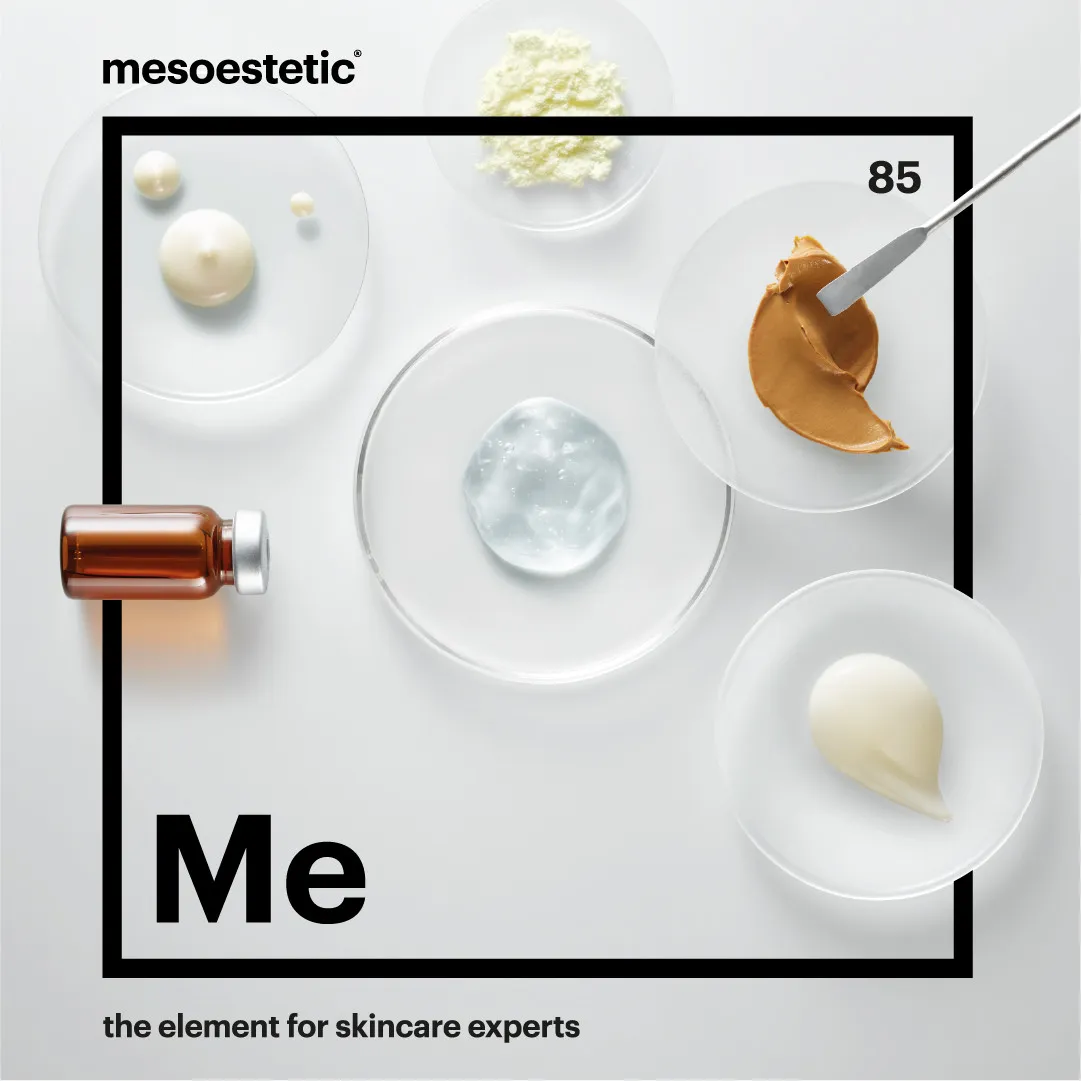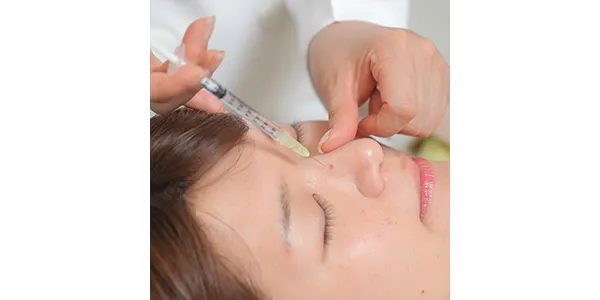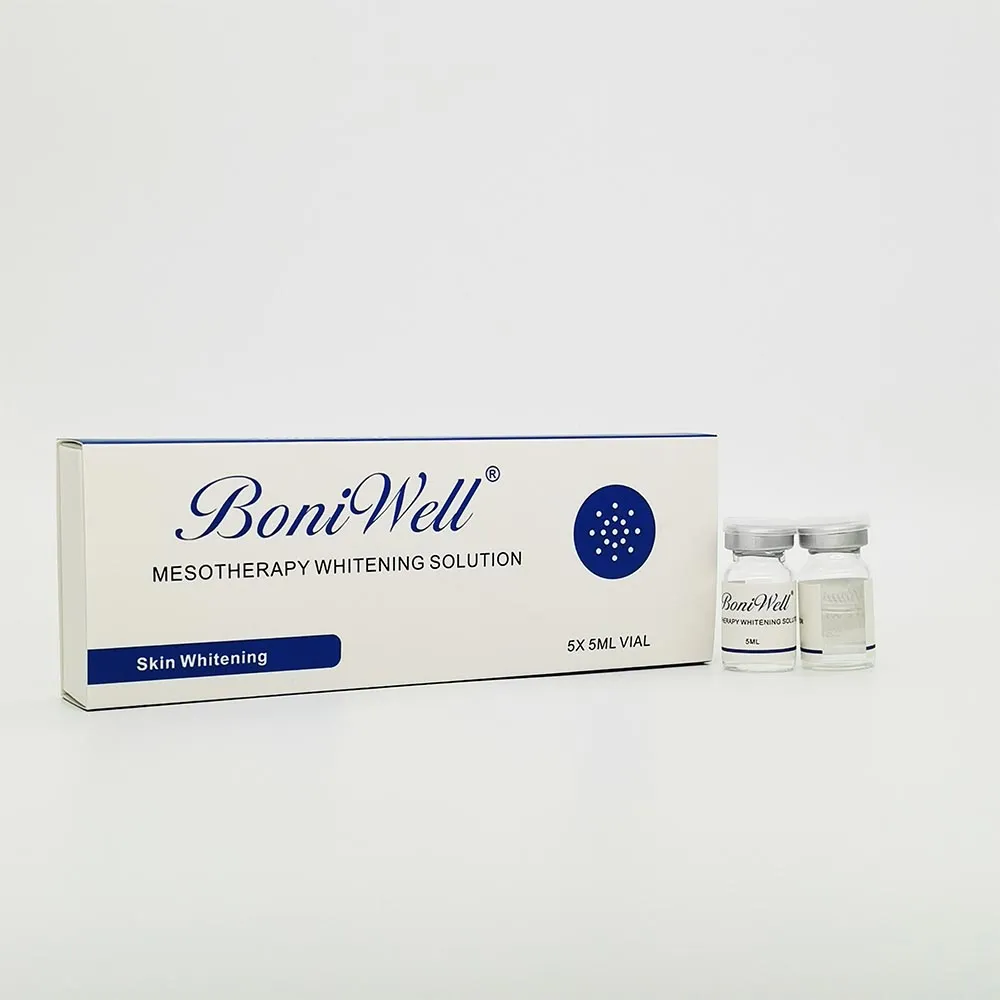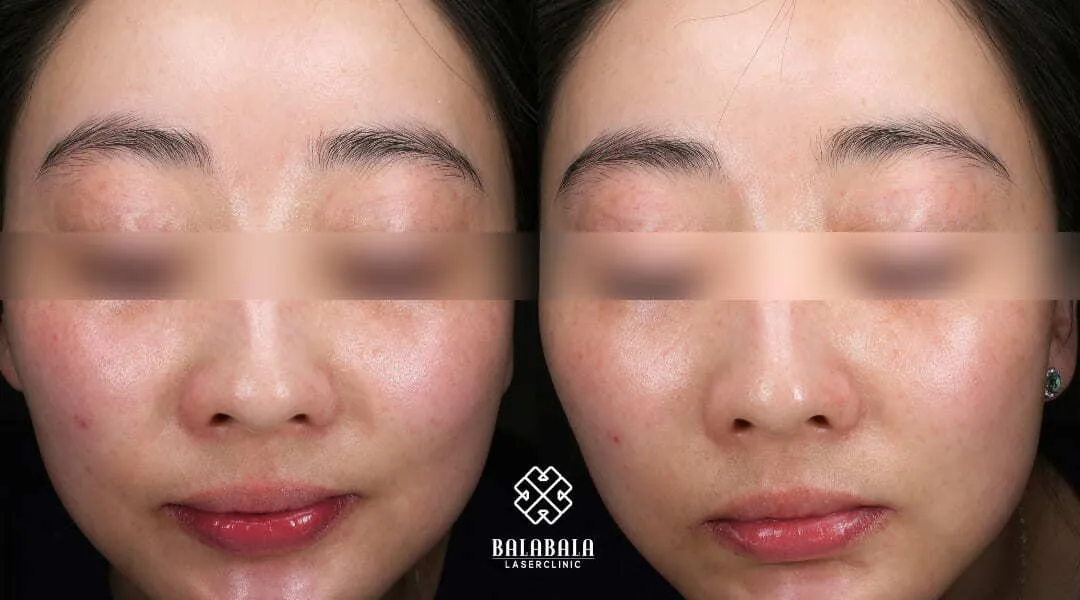What is Mesotherapy Skin Whitening?
Mesotherapy skin whitening is a minimally invasive cosmetic procedure designed to rejuvenate the skin and address issues such as uneven skin tone, hyperpigmentation, and dullness. The procedure involves injecting a customized cocktail of vitamins, minerals, amino acids, and other beneficial substances directly into the mesoderm, the middle layer of the skin. This targeted approach allows for efficient delivery of active ingredients, promoting enhanced skin health and a brighter complexion. Unlike topical treatments that may only penetrate the surface, mesotherapy delivers ingredients directly to where they are most needed, maximizing their effectiveness and providing more visible results. The popularity of mesotherapy has grown significantly due to its ability to offer a less aggressive alternative to more invasive procedures, making it an attractive option for individuals seeking skin improvement with minimal downtime.
The Science Behind Mesotherapy for Skin Whitening
The science behind mesotherapy for skin whitening revolves around the principle of delivering active ingredients directly to the cells responsible for skin pigmentation, primarily melanocytes. These cells produce melanin, the pigment that gives skin its color. Hyperpigmentation, such as sunspots, age spots, and melasma, occurs when melanocytes overproduce melanin. Mesotherapy targets this issue by utilizing a combination of ingredients that work synergistically to inhibit melanin production, promote cellular turnover, and reduce the appearance of existing pigmentation. This targeted approach ensures that the active compounds effectively reach the melanocytes, disrupting the melanin synthesis process and leading to a more even skin tone. Additionally, the micro-injections used in mesotherapy stimulate collagen and elastin production, further enhancing skin texture, elasticity, and overall radiance. The procedure’s effectiveness is rooted in the direct and localized delivery of these beneficial substances, making it a potent solution for skin whitening and rejuvenation.
Key Ingredients Used in Mesotherapy for Whitening

A mesotherapy cocktail for skin whitening typically includes a blend of active ingredients chosen for their ability to lighten the skin, reduce pigmentation, and improve overall skin health. These ingredients often work synergistically to deliver optimal results. Antioxidants, such as vitamin C and glutathione, are essential for neutralizing free radicals, protecting the skin from environmental damage, and promoting a brighter complexion. Kojic acid and arbutin are commonly used to inhibit melanin production, thereby reducing the formation of new dark spots. Hyaluronic acid is frequently incorporated to hydrate the skin, enhance its elasticity, and create a plumper appearance. Other ingredients may include peptides, which stimulate collagen production and improve skin firmness, and various vitamins and minerals that provide essential nutrients for healthy skin function. The specific combination of ingredients can vary depending on the individual’s skin type, the severity of pigmentation, and the desired outcome, ensuring a personalized approach to skin whitening. Image of Mesotherapy ingredients.
Commonly Used Ingredients
Popular ingredients used in mesotherapy for skin whitening include Vitamin C, a potent antioxidant known for its brightening and collagen-boosting properties. Glutathione, a powerful antioxidant that inhibits melanin production, is another common element. Kojic acid and arbutin are frequently incorporated for their ability to block tyrosinase, an enzyme crucial for melanin synthesis. Hyaluronic acid is often included to hydrate and plump the skin, promoting a youthful appearance. Peptides, such as palmitoyl pentapeptide-4, are utilized to stimulate collagen and elastin production, improving skin firmness and elasticity. Additionally, various vitamins, minerals, and amino acids provide essential nutrients to support overall skin health and enhance the effectiveness of the whitening process. These ingredients are carefully selected and combined to address different aspects of skin pigmentation and promote a more radiant and even skin tone. Image of ingredients.
How Mesotherapy Skin Whitening Works
Mesotherapy skin whitening works by delivering a carefully formulated cocktail of beneficial substances directly into the mesoderm, the middle layer of the skin. This targeted approach ensures that the active ingredients are delivered precisely where they are needed to address skin concerns. The process begins with a consultation and skin assessment to determine the individual’s specific needs and create a customized treatment plan. During the procedure, a trained practitioner uses micro-injections to administer the mesotherapy solution. These injections are typically shallow and minimally invasive, causing minimal discomfort. The ingredients in the solution work on multiple levels to achieve skin whitening. They inhibit melanin production, reduce existing pigmentation, promote cell turnover, and stimulate collagen and elastin production. This comprehensive approach leads to a more even skin tone, reduced appearance of dark spots, and improved overall skin texture. Image of Mesotherapy procedure.
The Mesotherapy Procedure Step by Step

The mesotherapy procedure for skin whitening typically follows a structured sequence of steps designed to ensure safety and efficacy. The process begins with a thorough consultation where a qualified practitioner assesses the patient’s skin type, concerns, and medical history. A personalized treatment plan is then developed, outlining the specific ingredients and the number of sessions required. Before the procedure, the skin is cleansed and sterilized to minimize the risk of infection. A topical numbing cream may be applied to the treatment area to reduce discomfort, especially for sensitive individuals. Using a fine needle or a mesotherapy gun, the practitioner injects the customized solution into the mesoderm. The injections are typically spaced closely together, ensuring even distribution of the active ingredients. After the injections are complete, the skin may be gently massaged to aid in the absorption of the solution and promote circulation. Following the procedure, the practitioner will provide aftercare instructions to optimize results and minimize potential side effects. Image of Mesotherapy procedure.
What to Expect During Your Session
During a mesotherapy skin whitening session, patients can anticipate a relatively comfortable and quick procedure. Prior to the treatment, a detailed consultation will occur, during which the practitioner will assess the skin and discuss the process. The skin will then be cleansed and prepared. To minimize discomfort, a topical numbing cream may be applied, especially in sensitive areas. The practitioner will use a fine needle or a specialized mesotherapy gun to inject the customized solution into the skin. Patients may experience a slight pricking or stinging sensation during the injections, but this is generally well-tolerated. The entire procedure usually takes between 30 to 60 minutes, depending on the treatment area. After the injections, the skin may appear slightly red or swollen, which typically subsides within a few hours to a day. Patients can usually resume their normal activities immediately following the session, but it is important to follow the aftercare instructions provided by the practitioner to optimize results and minimize any potential side effects. Image of Mesotherapy session.
Benefits of Mesotherapy Skin Whitening
Mesotherapy skin whitening offers a multitude of benefits for individuals seeking to improve their skin tone and appearance. The procedure is highly effective in reducing hyperpigmentation, such as sunspots, age spots, and melasma, leading to a more even and radiant complexion. By delivering active ingredients directly into the mesoderm, mesotherapy promotes increased cellular turnover, helping to shed dull, pigmented skin cells and reveal a brighter, more youthful skin. The micro-injections stimulate collagen and elastin production, resulting in improved skin elasticity, firmness, and a reduction in fine lines and wrinkles. Mesotherapy can also enhance the skin’s hydration levels, leaving it feeling supple and revitalized. The minimally invasive nature of the procedure means minimal downtime, allowing patients to return to their daily activities shortly after treatment. Overall, mesotherapy skin whitening provides a comprehensive approach to skin rejuvenation, offering a range of benefits that contribute to a healthier, more luminous complexion.
Improved Skin Tone and Texture

One of the primary benefits of mesotherapy skin whitening is a noticeable improvement in skin tone and texture. The procedure works to even out skin discoloration, reducing the appearance of dark spots, and hyperpigmentation, such as sunspots and age spots. By delivering active ingredients directly to the cells responsible for pigment production, mesotherapy helps to regulate melanin synthesis, leading to a more uniform complexion. Simultaneously, mesotherapy stimulates collagen and elastin production, which enhances skin elasticity and firmness, resulting in smoother, more refined skin texture. The procedure also promotes increased cellular turnover, helping to shed dead skin cells and reveal a brighter, more radiant surface. With consistent treatments, mesotherapy can significantly improve the overall tone and texture of the skin, leaving it looking healthier, more vibrant, and youthful. Image of Mesotherapy results.
Reduced Appearance of Hyperpigmentation
Mesotherapy skin whitening is highly effective in reducing the appearance of hyperpigmentation, a common skin concern characterized by uneven skin tone and dark patches. The procedure targets hyperpigmentation by delivering a cocktail of ingredients that inhibit melanin production, the pigment responsible for skin color. These ingredients work to disrupt the melanin synthesis process, reducing the formation of new dark spots and gradually lightening existing ones. Mesotherapy also promotes cellular turnover, helping to shed pigmented skin cells and reveal a more even complexion. The targeted approach of mesotherapy allows for precise delivery of active ingredients directly to the affected areas, maximizing their effectiveness and providing visible results. Over a series of treatments, mesotherapy can significantly diminish the appearance of hyperpigmentation, resulting in a more uniform skin tone and a brighter, more youthful appearance. Image of hyperpigmentation.
Potential Risks and Side Effects of Mesotherapy
While mesotherapy skin whitening is generally considered safe, it’s essential to be aware of potential risks and side effects. The procedure is minimally invasive, but some individuals may experience temporary side effects such as redness, swelling, bruising, and mild discomfort at the injection sites. These effects typically subside within a few hours to a few days. More serious complications are rare but can include infection, allergic reactions to the ingredients, and changes in skin pigmentation. It’s crucial to choose a qualified and experienced practitioner to minimize these risks and ensure proper technique and sterile practices. Patients should also inform their practitioner about any allergies, medical conditions, or medications they are taking to avoid adverse reactions. Thoroughly understanding the potential risks and side effects allows individuals to make informed decisions and take necessary precautions before undergoing the procedure. Image of Potential Risks.
Possible Side Effects

Possible side effects of mesotherapy skin whitening are usually mild and temporary. Common side effects include redness, swelling, and bruising at the injection sites. These are typically caused by the micro-injections and resolve within a few days. Some individuals may experience mild discomfort or a slight stinging sensation during the procedure, but this can be minimized with topical numbing creams. In rare cases, more serious side effects can occur, such as infection, allergic reactions to the ingredients, or changes in skin pigmentation, including hyperpigmentation or hypopigmentation. To mitigate these risks, it is important to choose a qualified and experienced practitioner, ensure that sterile techniques are used, and disclose any allergies or medical conditions to the practitioner. Following aftercare instructions carefully can also help minimize potential side effects and promote optimal results. Image of side effects.
Who is a Good Candidate for Mesotherapy Skin Whitening?
Mesotherapy skin whitening is suitable for individuals seeking to improve their skin tone, reduce hyperpigmentation, and achieve a brighter complexion. Good candidates typically have concerns such as uneven skin tone, sunspots, age spots, melasma, or dull skin. It is most effective for individuals with mild to moderate pigmentation issues. However, it’s essential to consult with a qualified practitioner to determine if mesotherapy is the right choice. People with certain skin conditions, allergies to the ingredients used in the mesotherapy cocktail, or active skin infections in the treatment area may not be suitable candidates. Individuals with a history of keloid scarring should also discuss this with their practitioner. A thorough consultation will help assess your skin type, medical history, and treatment goals to determine if you are a good candidate and to create a personalized treatment plan tailored to your needs. Realistic expectations and commitment to aftercare are also important for optimal results. Image of Mesotherapy for skin whitening.
Aftercare and Maintenance for Optimal Results
Proper aftercare and maintenance are crucial for achieving optimal results and ensuring the longevity of the benefits from mesotherapy skin whitening. Following the practitioner’s specific instructions is essential. Generally, patients are advised to avoid direct sun exposure and tanning beds for several days after the procedure, as UV rays can exacerbate pigmentation and hinder the healing process. Applying a broad-spectrum sunscreen with a high SPF is a must, even on cloudy days, to protect the skin from further sun damage. Gentle skincare products are recommended, avoiding harsh exfoliants or irritating ingredients for a few days. Patients should also stay hydrated by drinking plenty of water to support skin health and promote healing. Regular follow-up appointments with the practitioner are necessary to monitor progress and address any concerns. A consistent skincare routine, including a gentle cleanser, moisturizer, and sunscreen, will help maintain the results and keep skin looking radiant and healthy. Image of skin care routine.
Post-Treatment Care Tips

Following post-treatment care tips is vital for maximizing the benefits of mesotherapy skin whitening and ensuring a smooth recovery. Avoid touching or rubbing the treated area to prevent infection and irritation. Apply a cold compress to the treated area for short intervals to reduce swelling and discomfort. Use gentle, fragrance-free skincare products to avoid irritation. Avoid strenuous activities, saunas, and steam rooms for at least 24-48 hours. Stay well-hydrated by drinking plenty of water. Protect your skin from the sun by using a broad-spectrum sunscreen with a high SPF and avoiding direct sun exposure, especially during peak hours. If any unusual symptoms or complications arise, such as severe pain, excessive swelling, or signs of infection, contact your practitioner immediately. Adhering to these tips will promote healing, minimize potential side effects, and contribute to achieving the desired skin whitening results. Image of skin care.
Maintaining Results Long Term
Maintaining the results of mesotherapy skin whitening requires a consistent and proactive approach to skincare and lifestyle choices. Protecting the skin from sun damage is paramount. Daily application of a broad-spectrum sunscreen with a high SPF is essential, along with avoiding prolonged sun exposure and tanning beds. Following a consistent skincare routine tailored to your skin type is crucial. This typically includes a gentle cleanser, a hydrating moisturizer, and potentially skin-brightening products, such as those containing vitamin C or niacinamide. Regular exfoliation can help to maintain skin radiance. Maintaining a healthy lifestyle is also important. This includes a balanced diet rich in antioxidants, adequate hydration, and avoiding smoking and excessive alcohol consumption. Regular touch-up mesotherapy sessions may be recommended to maintain results over time, as skin aging and environmental factors can impact pigmentation. A commitment to long-term skincare and lifestyle habits will ensure that your skin remains bright, even-toned, and healthy. Image of Skin care routine.
Comparing Mesotherapy with Other Skin Whitening Treatments
When considering skin whitening treatments, it is essential to compare mesotherapy with other available options to determine the best approach for your needs. Various treatments offer different mechanisms of action, levels of invasiveness, and associated benefits and risks. Some common alternatives include chemical peels, laser treatments, topical creams, and microdermabrasion. Chemical peels involve applying a chemical solution to the skin to exfoliate and promote new skin growth. Laser treatments use focused light energy to target pigmentation and stimulate collagen production. Topical creams often contain ingredients like hydroquinone, retinoids, or kojic acid to lighten the skin. Microdermabrasion utilizes microcrystals to exfoliate the skin’s surface. The choice of treatment depends on factors such as skin type, the severity of pigmentation, downtime preferences, and desired results. Consulting with a qualified dermatologist or aesthetician is important to assess your skin and determine the most suitable option. Image of comparison.
Mesotherapy vs Chemical Peels

Mesotherapy and chemical peels are both popular cosmetic procedures used to improve skin tone and address pigmentation issues, but they differ in their approach. Mesotherapy involves injecting a customized cocktail of active ingredients directly into the mesoderm, the middle layer of the skin. This allows for targeted delivery of ingredients that can inhibit melanin production, stimulate collagen, and promote cell turnover. Chemical peels, on the other hand, involve applying a chemical solution to the skin to exfoliate the outer layers. The depth of the peel can vary, from superficial to deep, depending on the concentration of the solution. Mesotherapy is generally considered less invasive, with minimal downtime and a lower risk of side effects. Chemical peels can be more aggressive, leading to more significant peeling and a longer recovery period. The choice between mesotherapy and chemical peels depends on individual skin concerns, desired results, and tolerance for downtime. Mesotherapy may be preferred for those seeking a less invasive option with targeted ingredient delivery, while chemical peels may be more suitable for addressing deeper layers of pigmentation and achieving more significant exfoliation. Image of chemical peels.
Mesotherapy vs Laser Treatments
Mesotherapy and laser treatments are both effective in addressing skin pigmentation, but they utilize different mechanisms. Mesotherapy involves injecting a customized blend of active ingredients into the mesoderm to lighten the skin, reduce melanin production, and promote collagen and elastin synthesis. Laser treatments, such as IPL or fractional lasers, use focused light energy to target and break down pigmented cells, stimulating new collagen growth. Laser treatments can be more precise in targeting specific areas of pigmentation, such as sunspots and age spots. However, they can also carry a higher risk of side effects, such as hyperpigmentation or hypopigmentation, especially in individuals with darker skin tones. Mesotherapy is generally considered less invasive and offers a broader approach to skin rejuvenation, including hydration and improved skin texture. The choice between mesotherapy and laser treatments depends on the individual’s skin type, the specific pigmentation concerns, and the desired outcomes. A qualified practitioner can assess your skin and recommend the most appropriate treatment option based on your specific needs. Image of laser treatments.
Cost and Availability of Mesotherapy Skin Whitening
The cost and availability of mesotherapy skin whitening vary depending on several factors, including the geographical location, the practitioner’s experience and qualifications, and the specific ingredients used in the treatment. Generally, the cost per session can range from a few hundred to several hundred dollars. The total cost will depend on the number of sessions required to achieve the desired results, as multiple sessions are usually needed. The availability of mesotherapy skin whitening also varies, but it is becoming increasingly accessible in many cities and countries. It is important to research and choose a reputable clinic or medical spa with experienced practitioners who are qualified and licensed to perform the procedure. Consider factors such as the clinic’s reputation, the practitioner’s expertise, and the quality of the products used. During your consultation, inquire about the cost of the treatment, the number of sessions recommended, and any potential additional expenses. Image of the cost.
Where to Find a Qualified Practitioner
Finding a qualified practitioner is paramount to ensuring a safe and effective mesotherapy skin whitening experience. Begin by researching licensed medical professionals, such as dermatologists or aesthetic doctors, who specialize in cosmetic procedures. Check online reviews and testimonials to gauge the practitioner’s reputation and patient satisfaction. Ensure that the practitioner has extensive experience in performing mesotherapy and is knowledgeable about various skin types and concerns. Schedule consultations with potential practitioners to discuss your goals, assess their expertise, and inquire about their training and certifications. During the consultation, ask about the specific ingredients they use, their protocols, and the potential risks and side effects. Verify that the clinic adheres to strict hygiene standards and uses sterilized equipment. It’s essential to choose a practitioner with whom you feel comfortable and confident. The practitioner should be able to explain the procedure in detail, answer your questions thoroughly, and create a customized treatment plan tailored to your specific needs. Image of a qualified practitioner.
The Cost Factor
The cost of mesotherapy skin whitening can vary significantly depending on several factors. These include the location of the clinic or medical spa, the expertise and qualifications of the practitioner, and the specific ingredients used in the mesotherapy cocktail. Generally, the cost per session can range from a few hundred to several hundred dollars. The total cost will also depend on the number of sessions required to achieve the desired results, as multiple sessions are typically recommended. It is essential to inquire about the cost during the initial consultation and to understand what is included in the price, such as the cost of the treatment itself, any consultation fees, and any potential follow-up appointments. When evaluating the cost, prioritize the practitioner’s experience, the clinic’s reputation, and the quality of the ingredients used. While cost is a consideration, choosing a qualified and experienced practitioner should be the primary focus to ensure safety, efficacy, and optimal results. Image of the cost factor.
